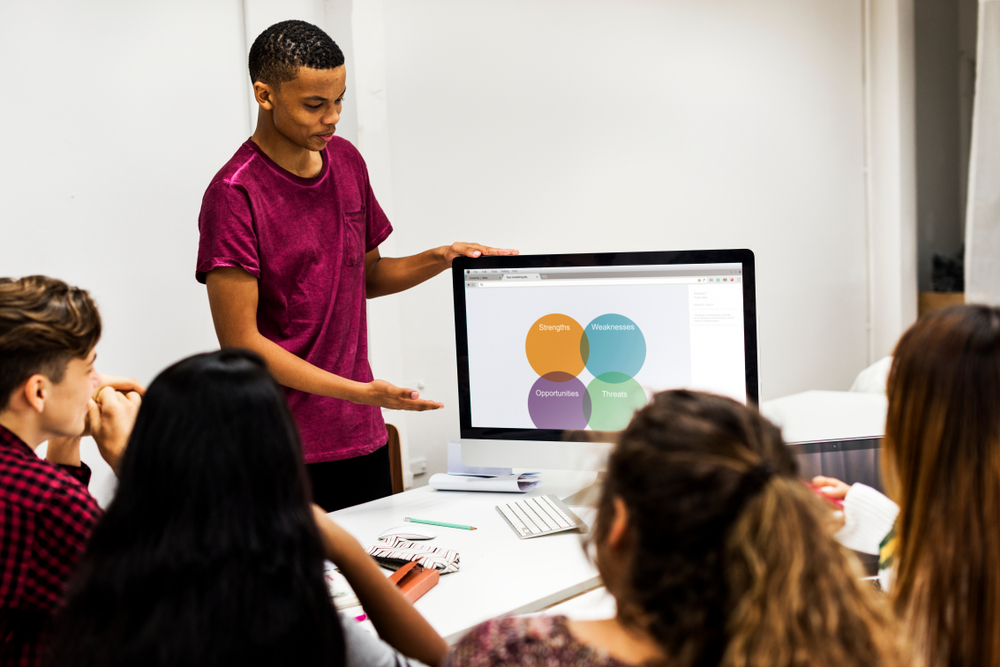Schools encourage teachers to include technology in the classroom while engaging students through creative projects. Using multimedia design in the classroom provides students with skills for their future by integrating technology and creativity. Additionally, studies show that multimedia design improves student learning. The use of visuals alongside text stimulates brain activity, deepening attention and increasing student learning. It also helps students engage with possibilities for their own lives and in the world. Here are some tips for teachers interested in increasing student learning with multimedia design in schools.
Use Resources Available to Schools for Free
Canva is a free online design resource well-known to many teachers. The site provides a wide range of fun templates for student work. Teachers can use it to start students off small at the start of the school year with infographics, posters or collages. For students and teachers wanting to take a deeper dive into multimedia design, check out Canva for Education. Not only is Canva free for schools, but they offer templates for school activities incorporating social-emotional learning.
Integrate Multimedia Projects Throughout the Year
When lesson planning, try to work multimedia design into students’ homework at least once every unit. Have students make one-page review sheets of topics covered in the chapter. By using several smaller projects, teachers can spread out due dates. This prevents students and teachers from feeling overwhelmed. It also lets students explore the many options available. Then, place audio-visual projects towards the end of the year, as these will be larger in scale. These larger projects are a great option for group work.
Encourage Students to Branch Out and Experiment
Let students know they’re not being graded on a pretty color palette, since the goal is to get hands-on learning and apply classroom concepts in new ways. Laura Bradley teaches a design lab class for middle schoolers. She writes about it in this post, explaining the many kinds of multimedia tools available to students. After a project, Bradley uses reflection questions to help her students gauge what they’ve learned. Her questions keep the focus on the educational experience, not the look of the final product.
Teach Students to Be Aware of What They’re Doing
Students need to be able to analyze the work they’re doing. They should also recognize the different parts of a multimedia project and know their purposes. This makes it easier for students to create their own projects in the future. These projects can be placed at any part of the school year. In the fall, multimedia design assignments can introduce a topic. Later, at the end of the year, they can enable reflection and self-analysis. ReadWriteThink.org provides an overview of what a reflective group project might look like. They even provide sample worksheets for group members to begin analyzing other multimedia design projects. This kind of reflection teaches metacognition, a key skill that deepens learning.
Keep Students Safe When Learning Online
Any time students use technology in the classroom, there are dangers, especially when students learn online. A school’s content filters can keep students from accessing sites and materials that may be harmful. However, schools must also consider dangers such as cyberbullying and predatory grooming. Content filters don’t offer protection from these risks. Moreover, content filters are easily bypassed. By installing screen monitoring software like LearnSafe, schools can detect these risks as well as potential threats. In this way, LearnSafe works hand-in-hand with content filters to keep students safe and focused on learning.


